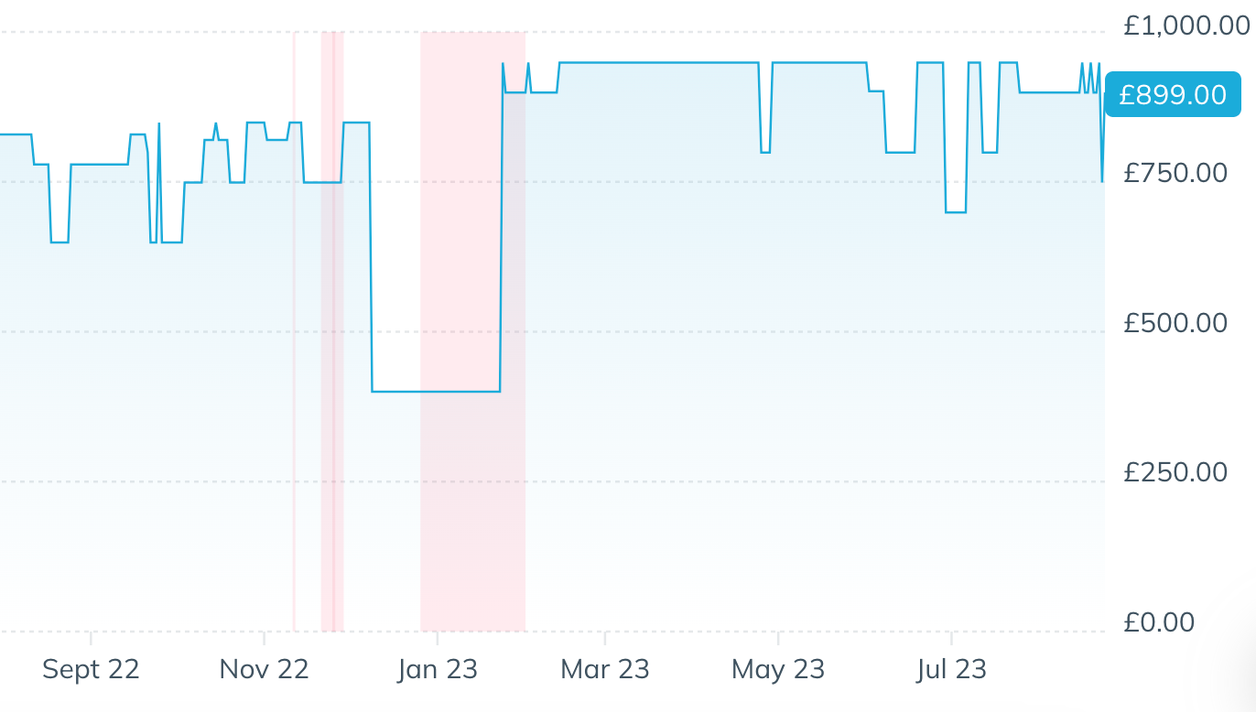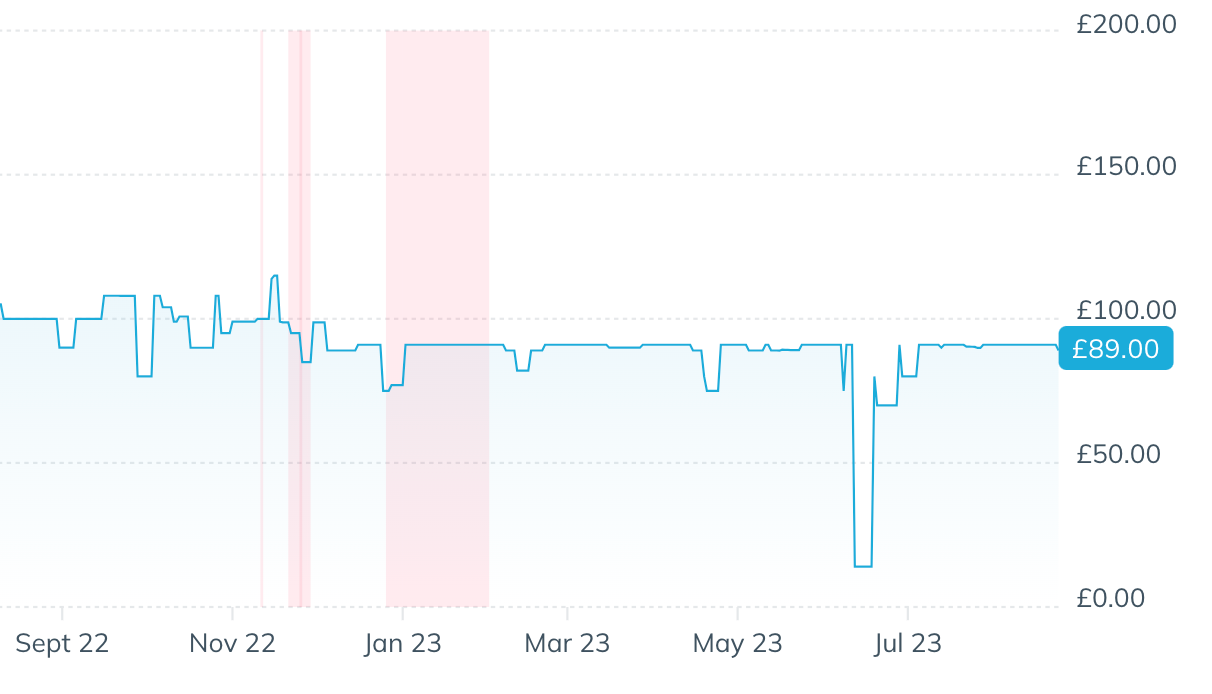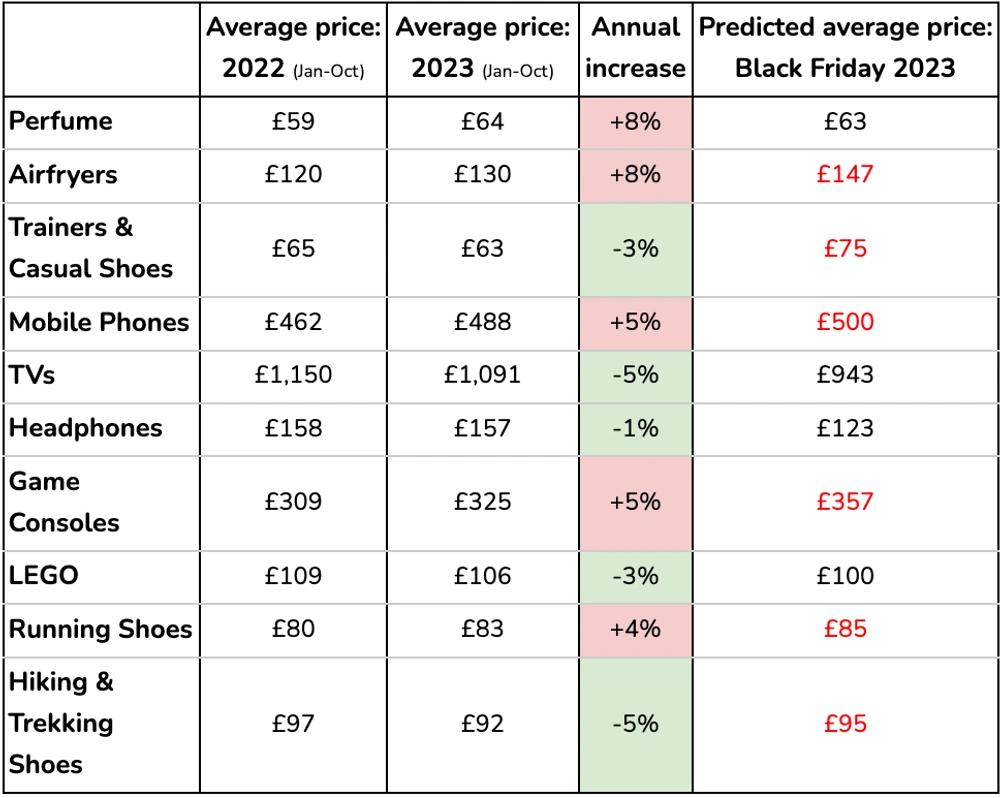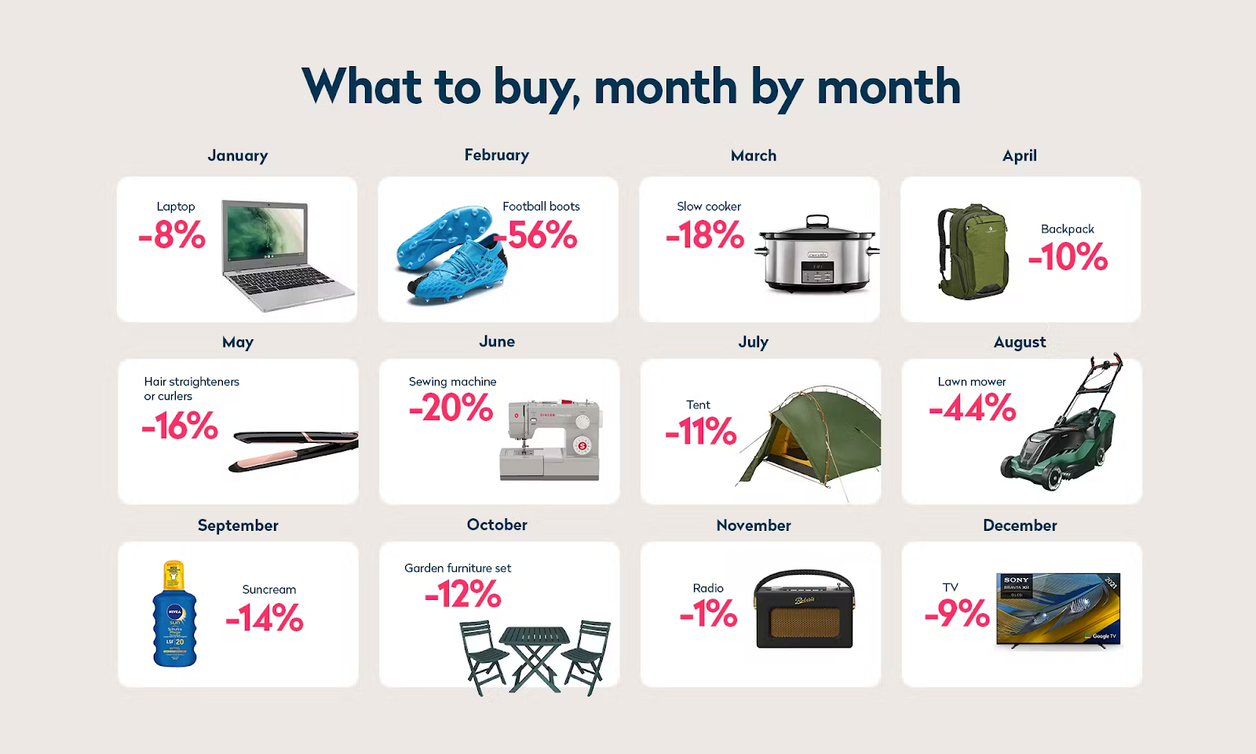Black Friday 2023: Trends & Predictions
PriceSpy
PriceSpy
Updated: 21 November 2023
PriceSpy
PriceSpy
Updated: 21 November 2023

The continued impact of inflation means the festive shopping period will undoubtedly cost shoppers more than last year. In spite of this, retailers will be hoping that record high wage growth may help offset the increased price of goods and maintain the usual fever level around flash sales day like Black Friday, Cyber Monday, Boxing Day and the January sales.
Inflation hovered around the 10% mark for much of the first half of 2023 (compared to the long term average of 2.8%). Despite a gradual tail off since the summer, high inflation has contributed to many products seeing significant annual price increases - such as common back-to-school items - as retailers pass costs on to consumers. We’ve seen consumers consequently get smart in how they try to tackle inflationary pressures and squeezed spending power, witnessed by the ‘make-your-own’ boom as people adapt to making their own: coffee, pizza, pasta, and even clothes.
Retail sales, meanwhile, have been a mixed bag during 2023. Some months have exceeded analyst expectations - helped by warm weather and national holidays, such as the King’s Coronation - whilst others have sounded the bell of caution. In July, at the mid-way point of 2023, the Confederation of British Industry said that “Firms remain cautious about the retail sector's near-term outlook as they pare back on [supplier] orders.”
Whilst there will be an almost guaranteed uptick in sales around the festive period, retailers will still be approaching the period with trepidation as consumers think carefully about what they’re willing to part with their money for.
One way that retailers encourage consumers to buy more is by making discounts look bigger than they actually are. This is an underhand, yet unfortunately widely used, sales tactic that we’re calling out as ‘pricewashing’
Pricewashing
Pricewashing is another term for ‘fake sales’ or ‘rollercoaster pricing’, whereby a retailer gradually hikes a product’s price, before suddenly dropping the price and advertising a discount based on the highest previous price. For example, claiming a discount of 50% compared to the previous day’s price, but - if compared to the price 30 days ago - it may only be a 20% discount.
Pricewashing isn’t new. In fact, we’ve noticed it a lot over recent years - especially around big sales periods like Black Friday:
Looking at 2022 in particular: 14% of all footwear on PriceSpy, 14% of computer/video games, 13% of running shoes and 12% of kitchen appliances - for example - were pricewashed.
One specific example is the Masterbuilt Gravity Series 1050 barbecue which saw a gradual increase in price from the start of October, before dropping in price ten days before Black Friday - but still cost £749 on Black Friday, compared to £649 at the start of October.

Another example of pricewashing from Black Friday 2022 is the Fitbit Charge 5 which gradually rose and fluctuated in price from 4th October, before beginning its drop in price seven days before Black Friday. Yet it was £99.99 on Black Friday, compared to £80 at the end of October.

What this means is that, whilst it may appear that there are widespread offers on Black Friday, a lot of the time these offers will have been cheaper in the months leading up to Black Friday.
Yo-yo'ing and bundling
Pricewashing isn’t the only promotional tool to watch out for. Other common sneaky sales tactics that we’ve seen, and that may well be at play over the festive season, include yo-yo pricing, gender-based pricing and bundle pricing.
It’s therefore important that shoppers are aware of these tactics and, according to a PriceSpy survey*, they are.
Over four in 10 (41%) people say they don’t trust the discounts offered by retailers on sale days (while 39% say they only trust the discounts “a little”). In addition, shoppers appear to be aware that Black Friday, and the festive season in general, may not always necessarily be the best time to snap up the specific product (or products) that they’re after.
The same survey revealed that almost a fifth (17%) of people have regretted a purchase they’ve made during Black Friday in the past, for reasons including:
Pricewashing aside, it’s a simple fact that retailers run promotions at countless different times of year so it’s no longer the case that big bargains can only be snapped up during set periods.
We took 240 of the most popular products on Black Friday 2022** and analysed their prices every day during the six months before and after the sale day:
To take into account the wider sales period around Black Friday, and retailers’ propensity to run ‘Black Week’ (or longer) promotions, we also looked at prices in the week before and week after Black Friday and found that a larger proportion of the most popular products had their cheapest price of the year during this time:
This tells us that Black Friday really is becoming Black Week. Shoppers should therefore be aware that deals can start up to a week before Black Friday and can last for a while after, too. And products will likely be cheaper, or the same price, during this period outside of Black Friday itself.
Savings of around 20% to be found on Black Friday
When we extend out the analysis beyond just the most popular products on PriceSpy, and instead look at all products across the site (around 120,000 products), the findings are more encouraging for Black Friday:
This demonstrates that there are indeed good offers to be found on Black Friday, but shoppers just need to know what to look for and where to look.
Older, less popular models can carry the biggest discounts
Retailers know they don’t need to drop prices of the hottest products on Black Friday to get people to buy them, given the consistently high demand for these items. Especially with manufacturing and logistics costs being notably higher this year, it’s even less likely that there’ll be significant discounts on the most popular products this Black Friday. Instead, it’s more likely that these items will be included in ad-hoc, flash sales throughout the year.
Shoppers therefore might be best off looking at alternative brands, or older models, in order to get the best bargains.
For example:
Looking at average prices up to the end of October 2023 and comparing these to the same period in 2022, it’s evident that some items have risen in price due to inflation. Taking the average savings found on Black Friday 2022, and applying those same savings to 2023 prices, the table below displays our predictions on how prices may end up on Black Friday this year.

It’s likely that many shopping categories are going to be more expensive this Black Friday compared to Black Friday 2022. This isn’t to say that good, genuine deals won’t be found within those categories - but that, on an average level, prices are likely to be higher. Inflation is largely to blame here. The other factor at play, as explored earlier in this report, is retailers’ pricing strategies.
Therefore, the key point to focus on when shopping is ensuring that you’re not paying more on Black Friday than you would if shopping at a different time of year.
Products that are definitely worth checking the price history of this Black Friday include: hiking, trekking, running shoes and trainers, game consoles, mobile phones and the ever-popular airfryer.
When to shop instead
Looking outside of the festive season, you can get a good idea of when to buy certain items to get the best price:


Black Friday can be a great period for both shoppers and shops alike. However, it’s critical that retailers consciously avoid falling into the pricewashing trap and instead provide clarity around the offers they’re providing.
For shoppers, being as prepared and as educated as possible is the best way to snap up genuine deals this year.
1. Do your research and avoid falling for pricewashing
When you’ve found an item you want to buy, check its price history to make sure that a deal is actually a good deal - and not simply a retailer pricewashing. Prices go up and down countless times throughout the year so chances are, if an item’s been cheaper before, it’ll go back to that price again. Don’t take an advertising label at face value as this might disguise the reality of how good, or not, a deal is.
2. Don't always buy the newest, shiniest model
As we’ve explored, older models often have bigger discounts than their newer counterparts on Black Friday - so consider whether you really need the newest model. If you do, look back at historic pricing trends to understand when it might be cheapest. For example, when it comes to smartphones, we know that iPhones don’t tend to notably fall in price for at least a year - whereas Samsung Galaxies see a reasonable price drop after around 10 weeks.
3. Shop at multiple retailers
Whilst bigger stores may shout the loudest about their Black Friday promotions, you might often find bigger and better discounts at smaller, more specialist retailers. Therefore, whilst it can be tempting to put all of your eggs in one basket by doing the bulk of your Black Friday shopping at one major retailer, you may be missing out on better deals and more specialist advice and post-purchase support. Compare prices and reviews across different retailers before making any purchases.
4. Set up price alerts in advance of the festive season
We know that Black Friday is, in reality, now Black Week; with offers starting in the days or weeks before Black Friday, and lasting beyond, too. We also know from our research that Boxing Day or New Year’s Day can be a better time to buy certain items. Therefore it’s never too early to set up price alerts. That way, you’ll be notified when items on your wishlist fall in price which can help your chances of landing a great deal.
5. Resist the hype by making a list and sticking to it
And finally, a bargain is only a bargain if you really need it. Prepare your shopping list ahead of time and be disciplined in only buying items on that list when the sales come around.
-ends-
Methodology
* Survey of 2,061 consumers in the UK undertaken by Censuswide, on behalf of PriceSpy, between 30th September - 3rd October 2022
** Based on five most popular product categories > the five most popular subcategories > the most popular 10 products within each on Black Friday 2022
*** PriceSpy Price Index: A daily updated chain index that tracks price changes in all categories/brands (with sufficient data) over time. Products are weighted by popularity, determined by the number of click-outs and the number of stores offering the product. The index works much like a stock index, where daily price changes are used to update an accumulated index, and where company size corresponds to product popularity)
**** Based on the PriceSpy Price Index for 2020, 2021 and 2022
PriceSpy is a comprehensive price and product comparison service used by millions of consumers every month. It helps consumers find, discover, research and compare products.
Read more